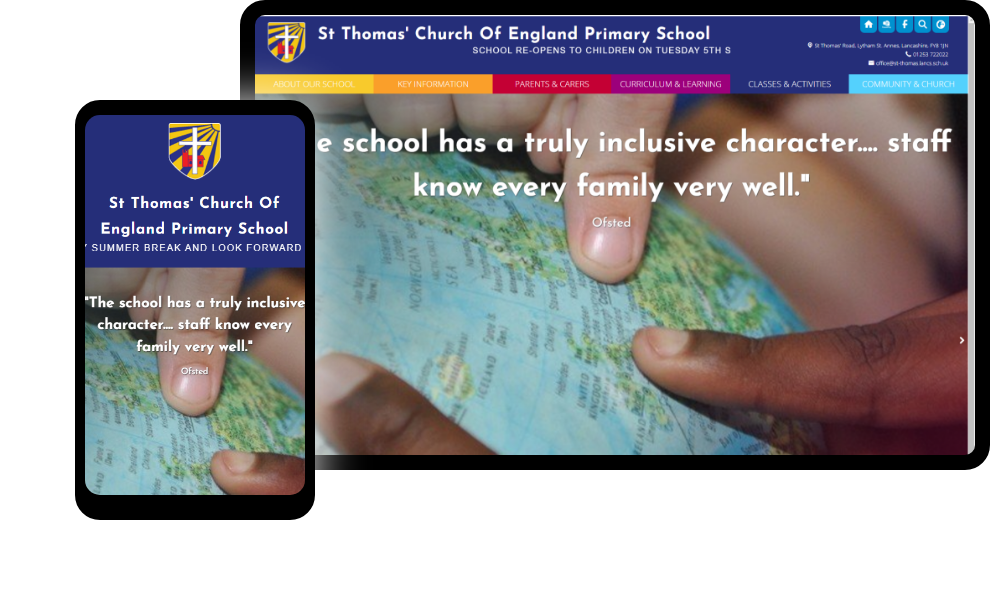The Keys To Engagement And Connection
When you want your students, their parents, and your alumni to be engaged and connected to your school, there is one key step you need to take. You have to prepare your school’s website to be a mobile-friendly school website design.
More and more people are switching from laptops and PCs and going to their mobile phones for internet searches. Mobile phones are convenient and easy to use and almost everyone has one.
This upgraded mobile-friendly design should also help you with SEO rankings. It is vital when you want great communication with parents, students, and alumni.
What Is Mobile-First Design For A School Website?
When website developers design for PCs first, it is called backward design thinking. This type of design effort does not encourage the designer to focus or create innovations that would work on mobile phones.
To do a mobile-first design for a school website, the web designer first designs the website for mobile phones and then moves on to the bigger electronic devices like notebooks, laptops, and PCs.
This technique is designed to help designers to focus more on what they are doing and be more creative with their innovations. With a large number of the population using mobile phones, schools that want to upgrade older websites or build new ones should consider this newer technique.
Why Is Mobile-First Design Important For Schools?
There are a lot of benefits a school will receive from doing their website in the mobile-first order. Here are just a few of the most important benefits:
1. There Is An Improved User Experience
When you design for mobile phones first, you are providing the mobile phone internet user with better optimization as well as a well-thought-out experience.
This helps capture the attention of those using their mobile phones to peruse your website. The improved and easier-to-use experience keeps them onsite longer.
2. Accessibility
With a mobile-friendly school website design parents and students can access the school’s website from just about anywhere they happen to be. Plus, you are broadening the target audience as you include disabled and other mobile phone users who may not have access to a PC.
Also, the features like voice commands help drivers and other busy people to turn unproductive time into productive time using voice commands.
3. A Better Website Performance
The better you design your website for mobile phone use, the better the experience for the mobile phone user. Navigation buttons will be easier to use and the website’s loading speed will be more attractive to mobile phone users.
A mobile-first design does help your SEO ranking.
4. Scalability
When you do a mobile-first design, you will find that it is easier to make adjustments for larger screens like PC monitors. Also, it is just easier to add website elements to a PC than it is to remove them to fit a mobile screen.
How To Adapt Your School Website For Mobile Devices
1. Optimize Your Website For Loading Speed
It has been proven that if the web page loading speed is improved by even as little as 0.01%, conversion rates go up by almost 10%. While that applies to retail applications, the improved speed will help your school’s website visitors be in a better frame of mind when they communicate with you.
Loading speed improves the user experience and helps them get to the information they are looking for faster. You want to make sure your website loads up as quickly as possible to keep your students and parents happier.
2. Use A Responsive Design
If you are not sure what a responsive design is, this is a design that automatically detects the device the visitor is using and adapts the page to fit their smaller screen.
You want a responsive design as search engines like Google give higher rankings to websites with this type of design. If you want to be seen, this is one way that helps you get noticed.
Plus, the responsive design integrates with other features on your website quite well. This adds to a seamless user experience that benefits everyone.
3. Keep Your Navigation Simple And Intuitive
Ease of use and a good user experience depends on your navigational design. If buttons cannot be found or touched, then the user will not have a great experience with your website.
To create a great mobile user experience, you have to make sure the navigation is easy to find, easy to use, and very simple to understand. Keep it simple applies to this issue and it will help with your mobile website design.
4. Use Large Fonts And Buttons
A very important topic as smaller fonts and small buttons make it extremely difficult to read your website as well as do any navigation throughout it. It is a nightmare to try to read very tiny print so when you design your website to be mobile friendly, use as large a font that works.
The same goes for your navigational buttons. You do not want them so small that the user cannot use their fingers to push. Nor should they be so small that your website visitor pushes two at the same time. Have your designer select the right sizes for both items.
5. Make Your Content Easy To Read And Scan
When it comes to school websites, you are not trying to impress parents, etc., with your technological know-how. You want them to get the information they are looking for fast, simple and have it easy to scan. Making the site easy to read achieves those goals
Some Additional Words
When you have decided to create or upgrade your school’s website to make it a mobile-friendly school website design, contact us. We have years of experience in experience in web design and can easily do the mobile-first website design for your school. Call us today to see how we can improve your school’s website.











